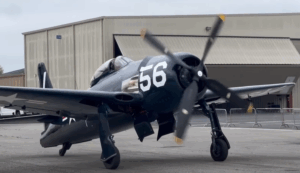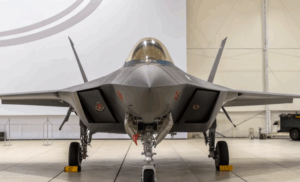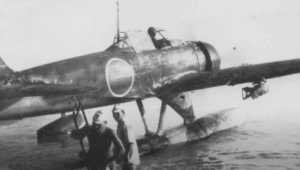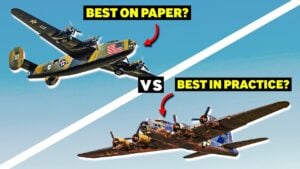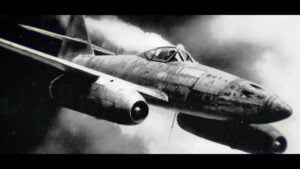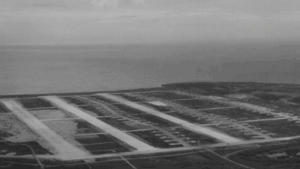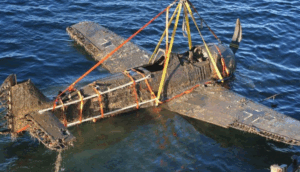The Spectacular Radar That Increased The Combat Effectiveness of B29

WWII US Bombers / YouTube
During World War II, technological advances often determined the success or failure of military operations. Among the most significant innovations was the development of advanced radar systems. For the United States Army Air Forces, one such breakthrough was the AN/APQ-7 radar, nicknamed the “Eagle.” Deployed primarily on B-29 Superfortress bombers, this radar transformed nighttime bombing operations, dramatically improving accuracy and effectiveness. This radar system became a key tool in the final months of the war, enabling precision attacks that had a profound impact on Japan’s war industry.
Development and Implementation of the Eagle Radar System
The Eagle radar system was developed as a replacement for earlier radar models like the AN/APQ-13 and H2X. These older systems provided a 360-degree field of view but lacked the clarity needed for precise target identification. By contrast, the Eagle radar used a fan-shaped beam that extended 60 degrees forward, providing a much higher resolution. This increased clarity allowed crews to distinguish terrain features and identify targets with a level of detail previously unattainable. As a result, bombers equipped with this radar were able to deliver their payloads with far greater accuracy, even under challenging conditions like poor visibility or enemy defenses.

The AN/APQ-7 radar was large and sophisticated. Its antenna, housed in a streamlined fairing, measured over 16 feet in length. The radar operated at a wavelength of 3.22 centimeters, classifying it as a high-frequency microwave system. This configuration enabled it to provide clear and detailed scope returns at ranges of up to 160 miles. However, the size of the radar and its components meant it could only be installed on large aircraft like the B-29.
The B-29 itself was a state-of-the-art bomber, known for its pressurized cabins and long-range capabilities. The addition of the Eagle radar further enhanced its effectiveness, particularly in nighttime operations. Eagle-equipped B-29s were first deployed in May 1945. These missions targeted Japan’s oil refineries, critical to the country’s war effort. The radar’s precision enabled the bombers to fly at lower altitudes of around 15,000 feet, improving bombing accuracy while reducing risks from anti-aircraft defenses.
Operational Success and Tactical Advancements with the Eagle Radar System
Reports from the time highlighted the remarkable results achieved with this radar. During its initial missions, the 315th Bomb Wing, which was specially outfitted with the Eagle radar, achieved unprecedented accuracy. For example, in one mission, bombers destroyed 95% of a target oil refinery with just half the available force. Over 15 missions, the unit successfully eliminated Japan’s remaining oil production facilities, delivering a devastating blow to its military and industrial capacity. The 315th lost only three bombers during these operations, a loss rate considered extraordinarily low given the scale and importance of the targets.

The Eagle radar also addressed longstanding issues with earlier radar systems. The older AN/APQ-13, while effective for navigation and basic bombing, struggled in conditions with heavy cloud cover or smoke. This often forced crews to rely on offset bombing techniques, which involved aiming at landmarks near, but not on, the intended target. The Eagle radar eliminated much of this guesswork. Its detailed scope returns allowed crews to identify their targets directly, ensuring that bombs landed closer to their aim points. In fact, Eagle-equipped bombers could place 30% of their bombs within a 2,000-foot radius of the target, a significant improvement over earlier systems.
The Eagle radar system also contributed to the development of new bombing tactics. The fan-shaped radar beam provided a more focused view of the target area, enabling longer and more deliberate bombing runs. These runs, lasting up to 70 miles, gave crews additional time to set up their attacks, reducing errors and increasing the likelihood of hitting their targets. In contrast, earlier radar systems required shorter bombing runs, which often felt rushed and less precise.
Broader Deployment and Impact of the Eagle Radar System
The success of the Eagle radar led to calls for its wider deployment. By June 1945, around 100 Eagle-equipped B-29s were operational in the Pacific theater. Military leaders recognized the radar’s potential to improve bombing accuracy across all theaters of war. In a December 1944 memo, General Carl Spaatz, commander of the United States Strategic Air Forces, highlighted the challenges posed by poor visibility and inadequate radar returns from older systems. He argued that the Eagle radar could solve these problems, particularly for high-priority targets defended by heavy anti-aircraft fire.

Despite its remarkable capabilities, the Eagle radar had limitations. Its large size and weight restricted its use to bombers like the B-29, and its 60-degree field of view meant that crews had to carefully plan their approach to ensure the target remained within the radar’s range. However, these limitations were minor compared to the advantages it offered.
The final months of the war demonstrated the transformative impact of the Eagle radar. By enabling precision bombing under conditions that would have previously rendered such operations impossible, it significantly enhanced the effectiveness of the B-29 Superfortress. The radar’s success marked a major step forward in the development of airborne radar technology, laying the groundwork for future innovations in military aviation.














